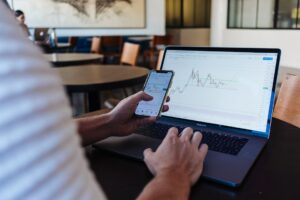How to Calculate and Measure Slippage in Forex Trading
Slippage is a term commonly used in forex trading that refers to the difference between the expected price of a trade and the actual price at which the trade is executed. It is a phenomenon that occurs due to market volatility, liquidity issues, or delays in trade execution. Slippage can have a significant impact on a trader’s profitability, so understanding how to calculate and measure it is crucial for successful forex trading.
To calculate slippage, you need to compare the intended execution price with the actual execution price. The intended execution price is the price at which you placed your trade order, while the actual execution price is the price at which the trade is filled. The difference between these two prices is the slippage.
For example, let’s say you place a market order to buy a currency pair at a price of 1.2500. However, due to market volatility, the trade is executed at a price of 1.2510. In this case, the slippage would be 10 pips (1.2510 – 1.2500).
To measure slippage, you can use a few different methods. One common approach is to calculate the slippage as a percentage of the intended execution price. To do this, divide the slippage by the intended execution price and multiply by 100.
Continuing with the previous example, if the intended execution price is 1.2500 and the slippage is 10 pips, the slippage percentage would be (10 / 1.2500) * 100 = 0.8%.
Another way to measure slippage is by using the bid-ask spread. The bid price is the price at which you can sell a currency pair, while the ask price is the price at which you can buy it. The difference between these two prices is the spread. If the actual execution price is closer to the ask price, it means you experienced positive slippage, whereas if it is closer to the bid price, it means you experienced negative slippage.
Measuring slippage in terms of the bid-ask spread allows you to compare it across different currency pairs and trading conditions. For example, if the spread is typically 2 pips for a specific currency pair, and you experience slippage of 1 pip, it would be considered relatively low. On the other hand, if the spread is 2 pips and you experience slippage of 5 pips, it would be considered high.
Understanding slippage is essential because it can directly impact your trading results. Positive slippage can be beneficial as it allows you to enter a trade at a better price than expected, resulting in increased profits. However, negative slippage can lead to higher losses or reduced profits.
To minimize the impact of slippage, there are a few strategies you can employ. Firstly, you can use limit orders instead of market orders. A limit order allows you to specify the maximum price at which you are willing to buy or sell a currency pair. By using limit orders, you have more control over the execution price and reduce the likelihood of experiencing slippage.
Another strategy is to trade during times of high liquidity. Liquidity refers to the ease with which an asset can be bought or sold without causing a significant change in its price. During periods of high liquidity, such as when multiple major trading sessions overlap, slippage tends to be lower as there are more buyers and sellers in the market.
Lastly, it is important to choose a reliable and reputable forex broker. A broker with a good reputation and advanced technology infrastructure is more likely to provide efficient trade execution with minimal slippage.
In conclusion, slippage is a common occurrence in forex trading that can have a significant impact on your profitability. By understanding how to calculate and measure slippage, you can better manage your trades and minimize its effects. Utilizing strategies such as using limit orders, trading during high liquidity periods, and choosing a reliable broker can help reduce slippage and improve your trading results.






